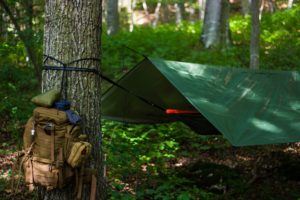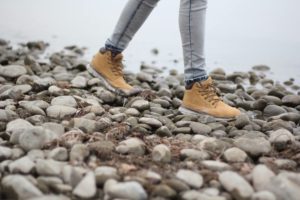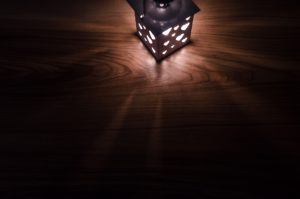If you’re thinking about learning to surf or you’ve recently made friends with someone who does, you might be having some trouble with the lingo. To the uninitiated, a bunch of surfers talking amongst themselves can be hard to follow. The first thing that you need to know is that surfers don’t talk like a bunch of cartoon turtles—those turtles talk like us!
Understanding surfer terms for waves and other slang and phrases is important for beginners: There are many surfing terms and phrases you can learn for beginners. Here are just a few that we’ll go over today:
- Backdoor
- Green room
- Heavy
- Bank
- Hang five
- Hang ten
- Layback
- Macker
- Messy
- Offshore
Surfing is popular all over the globe and surfing culture is a unique blend of sport and spirituality. There are important differences within the culture that are attached to specific regions. At the same time, there are certain terms and phrases that let surfers all over the world communicate about the things that matter the most. At first, it’s important to know them so that you can understand when you listen and learn. Over time, you’ll need them to ask and then eventually answer questions.
Surfer Wave Terms and Slang

One of the things that sets surfing apart from other sports is the constantly changing characteristics of the “field” that the sport is played on. There’s an old wives’ tale that the indigenous cultures of the artic have scores of words for describing snow. It makes sense that they would since snow is such a prominent element of their daily lives. There’s a similar connection between surfers and waves.
Wave conditions are affected by the geography of the coastline and so some beaches are famous for having ideal conditions on a regular basis while other beaches are rarely worth a surfer’s attention. But weather also plays a huge role in determining the quality of the waves on any given day. And the rise and fall of tides means that the time of day will also impact conditions.
Surfers have terms to describe the quality of surf on a given day, individual waves, and even specific parts of a single wave. Some of the terms are important to communicate the suitability of the waves for surfing. Other terms are related to safety and the level of risk that comes along with paddling out. There are even terms about waves that help to describe surfing techniques that involve the wave, the board, and the rider in equal parts.
If you’re serious about learning to surf and want to get better quickly, you should learn everything you can about how to read waves. Knowing the terms that surfers use to describe waves will be an important part of the learning process because you’ll need to be able to understand other surfers when you hear them describe conditions. Start out listening to learn and ask questions when you hear something you don’t understand.
Slang for Different Waves

All of the following terms will be important to learn how to talk to other surfers about waves. Some of them describe beach geography and its impact on waves. Some describe the relationship between weather conditions and wave quality. All of them communicate important information that helps surfers know where, when, and how to ride for the best surfing experience possible.
- A-Frame: If a wave forms in a peak and then breaks in both directions, surfers call it an A-frame due to the shape it has before it breaks.
- Backdoor: This term often refers to a surfing technique but it is also the name that has been given to the waves of a particular section of the Banzai Pipeline in Hawaii.
- Back Off: If a wave flattens out and looses power after being steep and surfable, it is usually due to the fact that it breaks and then hits deeper water. The term backing off is used to describe this phenomenon.
- Banks: Describes the shape of formations of sand on the sea bed, which has a huge influence on the shape of the waves above.
- Barrel: This is another term that is used to describe both waves and surfing techniques. When it is used to describe a part of a wave, it refers to the empty space that is created when the top of the wave travels faster than the bottom and breaks far enough in front of the bottom to leave an opening between them.
- Beach Break: When a wave breaks on the beach (not all waves do).
- Bomb: A huge wave.
- Bombora: An Australian term for a huge wave that breaks far offshore on a reef or sandbar.
More Wave Phrases
Yes, there’s more!
- Clean: When waves are smooth and breaking well.
- Close-Out: A wave is supposed to break across its length (from right to left or from left to right). When a wave breaks all at once across its entire length it is referred to as a close-out.
- Cooking/Cranking: Outstanding surfing conditions.
- Face: The front of the wave, where it hasn’t broken yet.
- Glassy: When there is little or no wind and the water surface is as smooth as glass.
- Gnarly: When conditions are scary, unsuitable for surfing, or even dangerous.
- Green Room: An old-school term for the barrel of a wave.
- Heavy: When the surf is powerful the waves are described as heavy because they both fall and hit harder.
- Hollow: When the waves are tubing or barreling, they are described as hollow.
- Inside: The section of the surf at a beach where waves get steeper and faster as they crash toward the beach.
- Keg: A slang term for a barrel.
- Lip: The crest of the wave. The part that falls forward when the wave begins to break.
- Macker: A term used to describe big waves because they will hit you like a Mack Truck.
- Messy: When the waves are ragged and no good for surfing, they are described as messy.
- Offshore: When the wind blows from shore out toward waves. This is ideal for surfing conditions because it helps to stack and smooth waves for better riding and later, more powerful breaks.
- Onshore: When the wind blows from the open ocean toward the shore it makes waves messy, flatter, and less powerful.
- Outside: The section of the surf at a beach that breaks farther away from the beach.
- Set: A group of waves. There are a lot of factors that influence the number of waves in a group and the space between groups.
- Shorebreak: When a wave breaks so close to the beach that it has the potential to cause injuries or damage to boards.
- Slab: A heavy break where the wave comes from deep water onto a shallow reef. Slabs are always hollow and powerful. Riding them can be extremely dangerous.
- Slop: When conditions are so bad that “messy” doesn’t do them justice.
- Tube: Another name for a barrel.
- WAM Chart: Wave animation chart. You can get them from the NOAA to help figure out the conditions over the next few days.
Slang for Surf Techniques

Getting to know waves is an important part of becoming a surfer, but at some point, you’ve got to actually paddle out and pop up if you want to learn to ride the surf. From the most basic to the most advanced techniques, there is a whole lexicon to describe what surfers do when they’re riding waves.
- Air: Any maneuver where the surfer and board break contact with the wave. Getting “air” or going “aerial” is a advanced surfing skill and usually requires ideal surfing conditions.
- Backdoor: If a surfer takes off on a wave from the far side of the peak and surfs through the barrel it is called a backdoor.
- Backhand: To surf with you back toward the wave. This is a more difficult and advanced technique than riding “forehand” or facing the wave.
- Barrel: To surf the barrel of a wave.
- Carve: A long, smooth, powerful turn.
- Cutback: When a rider reverses direction on the face of the wave to head back toward the portion of the wave where the power is and then re-reverses to surf the line.
- Drop Knee: A bodyboarding stance where the rider balances themselves on one foot and one knee similar to how a shooter would position themselves while aiming a shot.
- Floater: Riding on top of the broken crest of the wave instead of riding on the face of the wave.
- Forehand: To ride the wave in the direction that allows you to face the wave.
- Goofy Foot: Riding with your right foot toward the nose of your board and your left foot toward the tail.
- Hang Five: An old-school longboarding technique where the rider hands the toes of their front foot over the nose of the board.
- Hang Ten: Similar to hanging five but hanging the toes of both feet over the nose of the board.
- Kneeboarding: Riding on your knees instead of standing up.
- Layback: When riding backhand, a rider lies back into the wave.
- Off the lip: A surfing move where the rider turns up the face of the wave only to pivot off of the breaking part at the top of the wave (the lip). The steeper the angle of the wave, the better this maneuver will go for the rider. This is similar to tapping to coping on a skateboard while riding in a vert ramp.
- Off the Top: Similar to riding off the lip but the rider carves the top and rides along the top of the wave instead of pivoting sharply.
- Re-Entry: A combination of off-the-lip and floating. The rider rides up the face of the wave and returns down the wave by riding on top of the breaking section.
- Regular Foot: Standing with the left foot toward the nose and the right foot toward the tail of the board.
- Sick: Good.
- Snap: A sharp turn.
- Spray: When the rider throws up water during a big turn. Throwing spray is a sign of a skilled surfer.
- Switch Foot: A rider who can ride both goofy- and regular-footed.
Surfer Safety Slang
There’s a lot that can go wrong out there. Sometimes it’s the waves that make for dangerous conditions but other times the hazards come in the form of other riders or aquatic species that are in the water. Once you know how to read the waves and how to get up on your board, you need to make sure that you understand what other surfers are telling you about things that could influence the safety of your session.
- Bail Out: To roll, jump, or dive off of your board whenever things get iffy. This happens a lot when you are paddling out and run into a wave that is too big to get under.
- Drilling: What big waves do to you after you fall off of your board.
- Drop-In: One of the most unforgivable breaches of etiquette in the surfing world. Dropping in happens when you pop up on a wave that is already taken by another surfer. This can be a safety concern because of the possibility of two surfers colliding while riding the wave. It can also be a safety concern because the offending party might be subjected to violence at the hands of the aggrieved rider.
- Gnarly: Dangerous surf conditions.
- Gremmie: A surfer who can’t ride well.
- Grommet: A young surfer.
- Leash/Legrope: The cord that attaches a surfer to their board.
- Over the Falls: A wipeout where the rider falls from the top to the bottom of the wave as it breaks.
- Pearl/Pearldive: A wipeout caused by the nose of the board planting in the water and bringing the ride to a screeching halt.
- Rip/Rip Tide: A dangerously strong current formed by water flowing back out to sea. It’s important to remember to paddle across a rip current rather than paddling against it.
- Slab: Riding slabs is not something that a novice surfer should even consider.
Where Did Surfer Slang Come From?

Surfer lingo comes from the same source that every specialized dialect and lexicon comes from. Surfers all have something in common with each other that sets them apart from everyone else. Ever since the 1950s when surfing became popular, groups of wave riders have been spending time together with one another and apart from everyone else. They’ve developed a language to describe the important features of their environment in ways that make sense to them. Those terms don’t have to make sense to anyone else.
Whether you’re a grommet or a gremmie, you don’t want to get labeled a “kook” (an annoying surfer). Don’t try to pass yourself off as something that you’re not and observe the proper etiquette of surfing and you’ll probably be welcomed into the tribe by more experienced surfers. They’ll be happy to show you the ropes and share their knowledge.
Surfing Etiquette

If you don’t want to get labeled a kook, don’t paddle out through a set that surfers are riding and don’t drop in on someone else’s wave. Don’t “snake” or “back paddle” in the line up for a wave and don’t act like you know more or have more experience than you actually do. Being a courteous surfer is important to make sure everybody stays safe and has a good time. If you mess up: admit it, apologize, and learn from your mistakes so that you don’t repeat them.
Conclusion
At the outset of this article, it was pointed out that learning the language of surfing should be about becoming better prepared to talk to other surfers about surfing. That’s different than learning slang and buying gear to try to pass as a surfer before you’ve actually become one. There are a lot of surfers who will say that you’ve joined the tribe the first time you pop up on a wave. But being a part of the tribe doesn’t mean that you don’t still have a lot to learn.
Use this guide to surfer slang to teach yourself what you need to know to be able to learn and you’ll be in good shape in no time. Use this guide to try to hide what you don’t know and you’ll definitely miss out on opportunities to learn. You might also earn yourself a bad reputation that takes a long time to get rid of. Welcome to the world of surfing and good luck out there. Hang Loose and Be Kind.
https://skyaboveus.com/water-sports/Surfing-Dictionary
https://www.stokedsurfschool.com/blog/2016/01/17/surfer-slang-101
https://surfing-waves.com/surf_talk.htm






